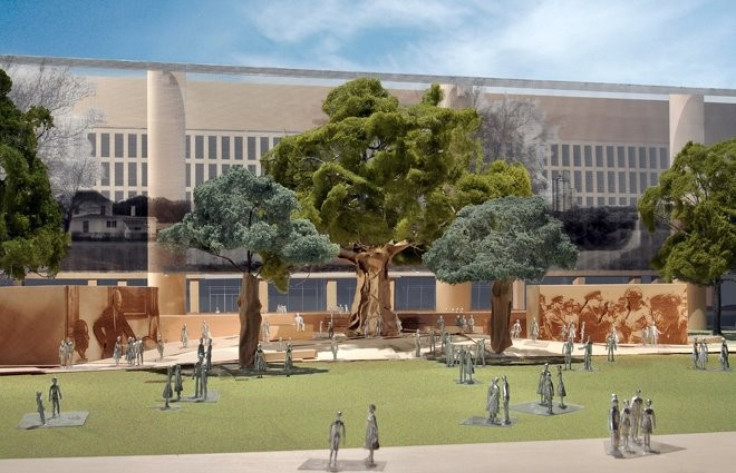Presidents Day 2012: Controversy Engulfs Eisenhower Memorial

A rendering of the memorial. (Gehry & Partners)
Along Washington, D.C.'s National Mall, an array of neoclassical monuments give tribute to the country's leaders. But a new arrival would break the mold and has caused recent controversy.
Frank Gehry's proposed Dwight D. Eisenhower Memorial focuses on the 34th president's youth in Kansas. The pastoral monument uses woven steel tapestries to illustrate the president's life amongst a bucolic environment filled with trees and a statue depicting Eisenhower as a boy.
The Memorial Commission unanimously approved the design in March 2010, picking it over 44 other proposals.
However, the Eisenhower family has objected to the design, saying that it does not depict the World War II Allied commander and president's full accomplishments, and focuses excessively on his humble upbringing.
In a January letter, Anne Eisenhower, representing the family, called for an indefinite delay and review of the project.
Celebrating Eisenhower's roots rather than his accomplishments risks isolating Ike from contemporary visitors, especially those from urban industrialized parts of the country and immigrant communities, she wrote, and also questioned the durability of the material and placement in front of the Lyndon Baines Johnson Department of Education Building.
Gehry, who is best known for his cascading steel structures, is a polarizing figure, but this commission is a particularly tricky approval process. Although he appears to continue to have the support of the commission, the intervention of the Eisenhower family and its dissatisfaction with the design represents a formidable obstacle.
And unlike typical commercial buildings, with their concrete goals of usage and square footage, a memorial has a more elusive task: encapsulating a person or event, and communicating the architect's vision of its legacy.
© Copyright IBTimes 2024. All rights reserved.











